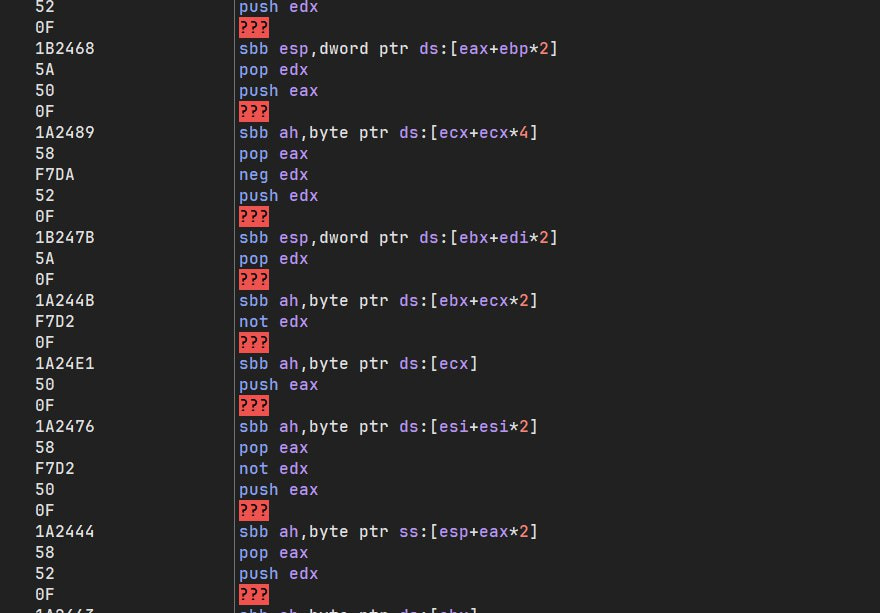This repository contains the Proof-of-Concept and research for a 25-year-old architectural blind spot affecting modern reverse engineering tools.
In 1997, Intel patented (US5,701,442) a series of "Hintable NOPs". While most of these have been assigned functions or are correctly parsed, two opcodes — 0F 1A and 0F 1B — remain ghosts in the machine.
CPUs execute these instructions as valid, multi-byte NOPs. However, leading disassemblers like IDA Pro, Ghidra, and Binary Ninja fail to recognize them. They interpret valid, executable code as unknown data, breaking static analysis and creating a simple but highly effective method for anti-disassembly.
This fundamental issue has remained largely unnoticed for decades.
You can see the blind spot in action yourself in under a minute.
- Grab the pre-compiled binary: /samples/patched.exe.
- Open it in your favorite disassembler (IDA, Ghidra, etc.).
- Navigate to the function.
- Observe how the tool fails on the 0F 1A and 0F 1B opcodes, showing them as db 0Fh, 1Ah..., undefined, or ???, effectively halting the analysis of the function.
- Run patched.exe. It will execute flawlessly and print a success message, proving the instructions are valid.
- /src/: The C++ source code used to generate the test binary.
- /samples/
- patched.exe: The pre-compiled 64-bit PoC binary.
- /papers/:
- ru.pdf: The full research paper (Russian).
- en.pdf: The full research paper (English).
MIT
.png)



